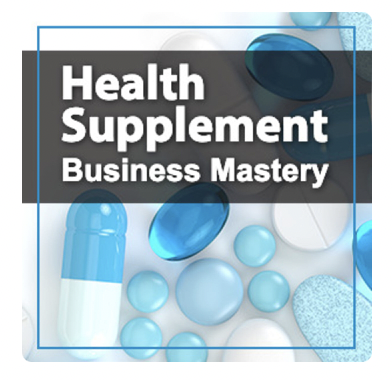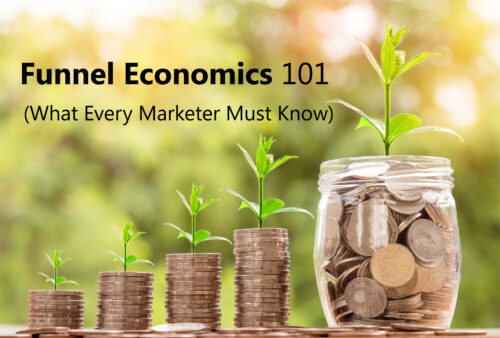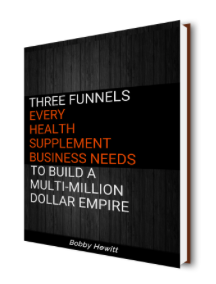Funnel Economics is vital to online marketing profitability.
Once a company has their products and customer support in place, it is ready to scale marketing resources next. The best way to leverage marketing is to bring in new buyers through a front end acquisition funnel. Getting just that one piece right amplifies the business as a whole.
This is where Funnel Economics comes into play. It is the most important and complex factor in determining the growth and profitability of your company.
What Is Funnel Economics?
Funnel Economics should not be confused with Funnel Key Performance Indicators (KPIs). Your Funnel KPIs essentially answer the basic question:
How much money do you spend on bringing people into your funnel (in the form of sales and marketing expenses) vs. how much money (in the form of Gross Profit) you get out of a funnel?
Funnel economics, on the other hand, tells you how each offer in your funnel contributes to the economic results of the whole. This will help you maximize your gross profit.
Without understanding the economics of a funnel you’re guessing when it comes to maximizing your funnel profitability. Your funnel may be making money and at the same time your “funnel offers” are all wrong. Resulting in losing a lot of potential profitability and value.
This requires you to look beyond the conversion rate of each step of your funnel, and even beyond the average order value (AOV) of your funnel. Part of what makes funnel economics so vital is an understanding of the profit contribution and margin of each offer in the funnel.
But let’s back up for just a second…
What is a Funnel?
A sales funnel is made up of a series of pages, as customer is intentionally lead through each step.
The typical flow of pages looks like this:
Sales page > Order page or Shopping Cart (in which they enter their credit card and all other information to complete the order) > Up-sell 1 page > Up-sell 2 page, etc. > Thank you page
The up-sells are also know as one-time-offers (OTOs) for different products. The customers can simply add these up-sells to their order with one click of an “Add To Order” button. There’s no need for them to re-enter their credit card or any other information.
[Tweet “Without first understanding the economics of your funnel you’re leaving profit on the table”]
Why is Funnel Economics Important?
Your front end acquisition sales funnel is the most important factor for determining growth for a company.
If you can acquire a buyer at a breakeven profit level and monetize them over the long term through Life Time Value, you can scale infinitely.
Then you can afford to spend more money to get a new buyer than your competitors can.
Most of the market and product factors are fixed and mostly unchangeable. The key to growth is to understand how your sales and marketing activities influence the ultimate economics of the company.
Are you getting $1 back for every $10 dollars you put in?You don’t have an endless supply of investment capital so you have to make sure the economics are working to produce the most value for you.
Why Not Just Jump In And Optimize The Funnel Straight Away?
Every conversion rate optimization agency (CRO) takes the approach of looking at the individual pages in a funnel separately and making changes for improvement.
And they are dead wrong.
They don’t even know if those are the best offers in a funnel for maximum profit.
As a result, they may increase conversion rate or even average order value and decrease profitability.
Because they don’t understand the Funnel Economics, and don’t approach it from an economics first posture they are missing out on potential profits.
Let’s look at an example…
You can get a conversion rate win on an upsell if you offered a BOGO (buy one get one free) versus 1 item at full price (or a lesser discount).
But what’s missing is the question:
What does the conversion rate need to be in order to make a BOGO more profitable than a single bottle offer?
Let’s look at an example:

Up-sell Scenario 1:
You have an offer for 1 bottle that normally sells for $39 but discounted at $19. And you’re getting a 9% conversion rate for that up-sell slot. From which you’re generating $ 9,000 in revenue. Which is a $3,000 gross profit.
Up-sell Scenario 2:
You have a BOGO offer (buy 1 get 1 free). So you get 2 bottles for the price of 1, again for $19.
In this case you A/B test the up-sell with this different offer and you were able to increase the conversion rate to 13%. That’s a 12% lift which any CRO agency will tell you is a win and take it as your new control.
However, because your Cost Of Goods Sold (COGS) went up, because you’re offering 2 bottles now vs. one for the same price, your gross profit has dropped down to $2,000.
The A/B test was actually a loser when you look at the gross profit of the funnel.
But that does not need to be the end of the story. There are many other BOGO variations that could make the upsell more profitable at a higher conversion rate than a 1 bottle offer. A model of your funnel will help you figure out the best possibilities for success.
Up-sell Scenario 3:
Let’s examine these two levers, conversion rate and price.
Here’s how it works…
You, build out a model that says: If you get 1,000 visitors what conversion rate would you need at what price point to equal the gross profit of your control offer?
You’ll take your revenue for this up-sell. Which is (total sales x price).
You can get your total sales by multiplying your total visitors (which in your model is 1,000) by the expected conversion rate.
Now that you have your expected revenue modeled out you’ll need to calculate the gross profit.
Which is:
Up-sell Revenue For This Offer – (COGS x Sales)
So your model tells you that…
A BOGO at $24.95 would need a 10% conversion rate to equal the Gross Profit of a 1 bottle offer at 9% conversion
Now you’re betting more wisely on this A/B test.
Since you know that you had a 12% lift in conversion at $19 for a BOGO and to be profitable you’ll have to increase the price to $24.95. The conversion lift is likely not going to be as high as 12% with a higher ticket price. But the minimum you would need to be equally profitable is only a 9% lift. It’s worth the test. Plus you now know that if you drop below that conversion rate lift you’re no longer profitable you can monitor it going forward to ensure continued profitability.
Funnel Economics Is Vital To Growth
Most conversion rate optimization agencies only focus on increasing conversion rate. No surprise there. The better CRO agencies also look at revenue. But the REALLY great ones look at profitability.
The first step is to break down the economics of a funnel. This allows you to see it from a different perspective and maximize your return.
Without first understanding the economics of your funnel you’re leaving profit on the table. And you might actually be losing money without even knowing it.
Discover the 3 funnels that can help your health supplement business succeed.

Listen to the Health Supplement Business Mastery Podcast for for dietary supplement entrepreneurs and marketers.




